Gestational exposure to chlordecone promotes transgenerational changes in the murine reproductive system of males
- PMID: 29980752
- PMCID: PMC6035262
- DOI: 10.1038/s41598-018-28670-w
Gestational exposure to chlordecone promotes transgenerational changes in the murine reproductive system of males
Abstract
Environmental factors can affect epigenetic events during germline reprogramming and impose distinctive transgenerational consequences onto the offspring. In this study, we examined the transgenerational effects of chlordecone (CD), an organochlorine insecticide with well-known estrogenic properties. We exposed pregnant mice to CD from embryonic day 6.5 to 15.5 and observed a reduction in spermatogonia (SG) numbers in F3, meiotic defects in spermatocytes and decrease in spermatozoa number in the first and third generation of male progeny. The RNA qRT-PCR expression analysis in F1 and transcriptomics analysis in F3 males using the whole testes revealed changes in the expression of genes associated with chromosome segregation, cell division and DNA repair. The expression of the master regulator of pluripotency, Pou5f1, decreased in foetal and increased in adult F1, but not in F3 adult testes. Analysis of histone H3K4me3 distribution revealed widespread changes in its occupancy in the genome of F1 and F3 generations. We established that 7.1% of altered epigenetic marks were conserved between F1 and F3 generations. The overlapping changes common to F1 and F3 include genes implicated in cell adhesion and transcription factor activities functions. Differential peaks observed in F1 males are significantly enriched in predicted ESR1 binding sites, some of which we confirmed to be functional. Our data demonstrate that CD-mediated impairment of reproductive functions could be transmitted to subsequent generations.
Conflict of interest statement
The authors declare no competing interests.
Figures
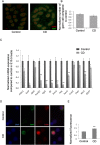
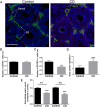
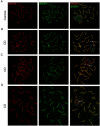
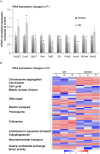
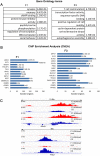

Similar articles
-
Developmental exposure to chlordecone induces transgenerational effects in somatic prostate tissue which are associated with epigenetic histone trimethylation changes.Environ Int. 2021 Jul;152:106472. doi: 10.1016/j.envint.2021.106472. Epub 2021 Mar 10. Environ Int. 2021. PMID: 33711761
-
Exposure to the widely used herbicide atrazine results in deregulation of global tissue-specific RNA transcription in the third generation and is associated with a global decrease of histone trimethylation in mice.Nucleic Acids Res. 2016 Nov 16;44(20):9784-9802. doi: 10.1093/nar/gkw840. Epub 2016 Sep 20. Nucleic Acids Res. 2016. PMID: 27655631 Free PMC article.
-
Transgenerational impaired male fertility with an Igf2 epigenetic defect in the rat are induced by the endocrine disruptor p,p'-DDE.Hum Reprod. 2014 Nov;29(11):2512-21. doi: 10.1093/humrep/deu208. Epub 2014 Sep 3. Hum Reprod. 2014. PMID: 25187598
-
Developmental windows of susceptibility for epigenetic inheritance through the male germline.Semin Cell Dev Biol. 2015 Jul;43:96-105. doi: 10.1016/j.semcdb.2015.07.006. Epub 2015 Aug 8. Semin Cell Dev Biol. 2015. PMID: 26265561 Review.
-
Epigenetic effects of methoxychlor and vinclozolin on male gametes.Vitam Horm. 2014;94:211-27. doi: 10.1016/B978-0-12-800095-3.00008-0. Vitam Horm. 2014. PMID: 24388192 Review.
Cited by
-
Transgenerational Inheritance of Environmentally Induced Epigenetic Alterations during Mammalian Development.Cells. 2019 Dec 3;8(12):1559. doi: 10.3390/cells8121559. Cells. 2019. PMID: 31816913 Free PMC article. Review.
-
Hatching is modulated by microRNA-378a-3p derived from extracellular vesicles secreted by blastocysts.Proc Natl Acad Sci U S A. 2022 Mar 22;119(12):e2122708119. doi: 10.1073/pnas.2122708119. Epub 2022 Mar 17. Proc Natl Acad Sci U S A. 2022. PMID: 35298333 Free PMC article.
-
Environmentally-Induced Transgenerational Epigenetic Inheritance: Implication of PIWI Interacting RNAs.Cells. 2019 Sep 19;8(9):1108. doi: 10.3390/cells8091108. Cells. 2019. PMID: 31546882 Free PMC article. Review.
-
Epigenetic transgenerational inheritance, gametogenesis and germline development†.Biol Reprod. 2021 Sep 14;105(3):570-592. doi: 10.1093/biolre/ioab085. Biol Reprod. 2021. PMID: 33929020 Free PMC article. Review.
-
Epigenetic Effects Promoted by Neonicotinoid Thiacloprid Exposure.Front Cell Dev Biol. 2021 Jul 6;9:691060. doi: 10.3389/fcell.2021.691060. eCollection 2021. Front Cell Dev Biol. 2021. PMID: 34295895 Free PMC article.
References
-
- Lesch BJ, Dokshin GA, Young RA, McCarrey JR, Page DC. A set of genes critical to development is epigenetically poised in mouse germ cells from fetal stages through completion of meiosis. Proceedings of the National Academy of Sciences of the United States of America. 2013;110:16061–16066. doi: 10.1073/pnas.1315204110. - DOI - PMC - PubMed
Publication types
MeSH terms
Substances
Grants and funding
LinkOut - more resources
Full Text Sources
Other Literature Sources
Medical
Molecular Biology Databases
Miscellaneous

